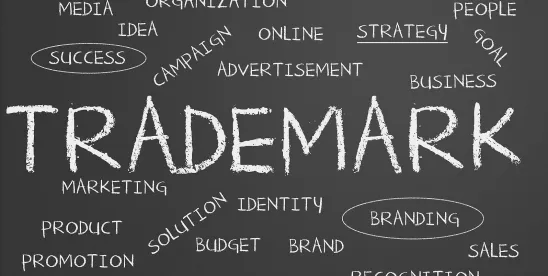In today’s crowded tech marketplace, brand identity is one of a company’s most valuable assets. A well-chosen trademark doesn’t just help consumers recognize your business – it also provides legal protection against copycats and builds long-term brand equity. When product lifecycles move quickly and competition is global, developing and protecting strong trademarks should be an early priority for technology companies.
Choosing a Strong Mark
To protect your brand, the first step is selecting a mark that is distinctive for your business. United States trademark law recognizes a spectrum of distinctiveness:
- Fanciful marks (e.g., completely invented words, like “Kodak”) and arbitrary marks (e.g., real words used in unrelated contexts, like “Apple” for computers) are the strongest.
- Suggestive marks (e.g., implying qualities of the product, like “Netflix”) can also be protectable but may require more effort to enforce.
- Descriptive terms (e.g., “CloudStore” for cloud-based data storage) often face hurdles during registration, as they directly describe an aspect of the product or service.
- Generic terms (e.g., “Email App” for email software) are never protectable.
Tech startups often lean toward descriptive marks so that potential customers can easily understand their product offerings. However, descriptive marks can be difficult and expensive to defend. For example, you usually cannot stop other parties from using descriptive terms, so other companies can use a similar (or identical) mark, which can confuse consumers. Investing early in a distinctive name helps avoid future rebranding and strengthens your trademark rights. Companies should also monitor how their marks are used to prevent genericism, where a brand name becomes synonymous with a product category (e.g., “Google” as a verb for searching on the internet).
Searching for Your Mark
Before committing to a mark, tech businesses should conduct a trademark clearance search to uncover other trademark uses that could create a legal risk. In some circumstances, certain words or phrases become popular choices for tech companies selecting new trademarks, which can create a crowded trademark landscape with risks for infringement. A trademark clearance search can identify trademark applications or registrations and common law users (i.e., non-registered use) that could prevent registration of your mark and/or prevent a trademark infringement risk. For example, the U.S. Patent & Trademark Office (USPTO) can cite an existing trademark registration or application to reject your trademark application. Additionally, if you select a mark too similar to an earlier user’s mark, you could infringe on that user’s rights and face a trademark dispute. A thorough search helps avoid costly infringement disputes, refusal of registration, and forced rebranding after launch. For tech businesses planning rapid growth or fundraising, a clearance search provides confidence that branding investments won’t be undermined by legal challenges.
Name Trends Among Tech Companies
One common trend among consumer-facing businesses is selecting a mark that intentionally misspells a common word to create a new word based on a descriptive term. As an example, Takl, a now-shuttered, Nashville-based startup, choose a mark that intentionally misspelled the word “TACKLE” for home task gig-matching services. While these approaches can help avoid descriptiveness issues and strengthen trademark protection, companies should be aware that misspellings may still face descriptiveness challenges if the meaning remains clear to consumers. Additionally, a misspelled mark won’t shield a company for trademark infringement if the misspelled mark is phonetically or visually similar to an existing, third-party mark.
Navigating Federal Registration: Benefits and Pitfalls
Federal trademark registration can be crucial for tech companies making fast moves into new, emerging industries. While trademark rights can be based on use of the mark in commerce (e.g., common law, non-registered use), federal registration with the USPTO offers critical advantages: nationwide priority, public notice of ownership, access to federal courts, and the ability to use a registration mark (®).
However, the trademark application can present some common pitfalls:
- Issues with the description of goods and services – Once filed, the description of goods and services (i.e., the list of products and offerings under the mark) can be narrowed, but not expanded. Additionally, the USPTO requires specific, clear wording in the description, and amendments are commonly required for a trademark to register.
- Incorrect dates of first use in commerce – Dates must reflect actual commercial use of the mark for each identified good and service, not pre-launch activity. The date of first use can be amended in some circumstances, but a trademark examining attorney can require additional information.
- Specimen errors – The USPTO requires evidence of real-world use, such as product packaging or a website showing the mark in connection with the goods and/or services. Specimen standards are different for goods than for services. Submitting mock-ups or advertising material that doesn’t describe the goods and/or services are common mistakes. Additionally, for downloadable software, applicants are required to submit specimens showing the mark in connection with the software available for download (e.g., on the Apple App Store).
- Ownership issues – Filing under the wrong entity (e.g., an individual founder instead of the operating company) can be a fatal error in certain circumstances.
While trademark applications can present hidden challenges, a well-prepared application can smooth the trademark prosecution process.
Scaling Globally: The Madrid Protocol Advantage
Tech companies often expand internationally faster than traditional industries, making international trademark protection essential. The Madrid Protocol offers a cost-effective path: a single trademark application through the USPTO can extend trademark rights to over 130 countries. While this system streamlines filings, local offices still examine applications individually, and applicants should anticipate jurisdiction-specific requirements. Additionally, the Madrid Protocol requires that applicants file a “basic” application in their home country, and if the basic application is successfully challenged and cancelled at home, the Madrid Protocol registration can be cancelled too. However, for companies moving and expanding fast, the Madrid Protocol offers an efficient route for obtaining protection in multiple jurisdictions.
Strategic Considerations for Early-Stage Tech Companies
- Start Early – A strong trademark strategy should be part of a startup’s early considerations, not an afterthought. Trademark clearance searches before launch can prevent conflicts and rebranding costs.
- Protect Core Brands First – Prioritize registration for company names, flagship product/service names, and logos. Companies with limited budgets often should apply for a word mark for the company name rather than a logo because protection for word marks can be broader than protection for a logo.
- Monitor and Enforce – Trademark law requires that tech companies, regardless of their size, enforce their trademarks or risk abandoning those rights. As a business grows and others take notice, it should monitor for infringing trademark use.
- Leverage Trademarks as Assets – Trademarks can enhance valuation during fundraising or acquisition negotiations by demonstrating brand strength and exclusivity.
Conclusion
In the fast-moving tech industry, trademarks are more than just names or logos – they’re strategic business tools that secure brand identity, open doors to new markets, and deter competition. By selecting a distinctive mark, carefully navigating the federal registration process, and planning for international expansion, technology companies can create a brand foundation as scalable and innovative as their technology.




 />i
/>i

